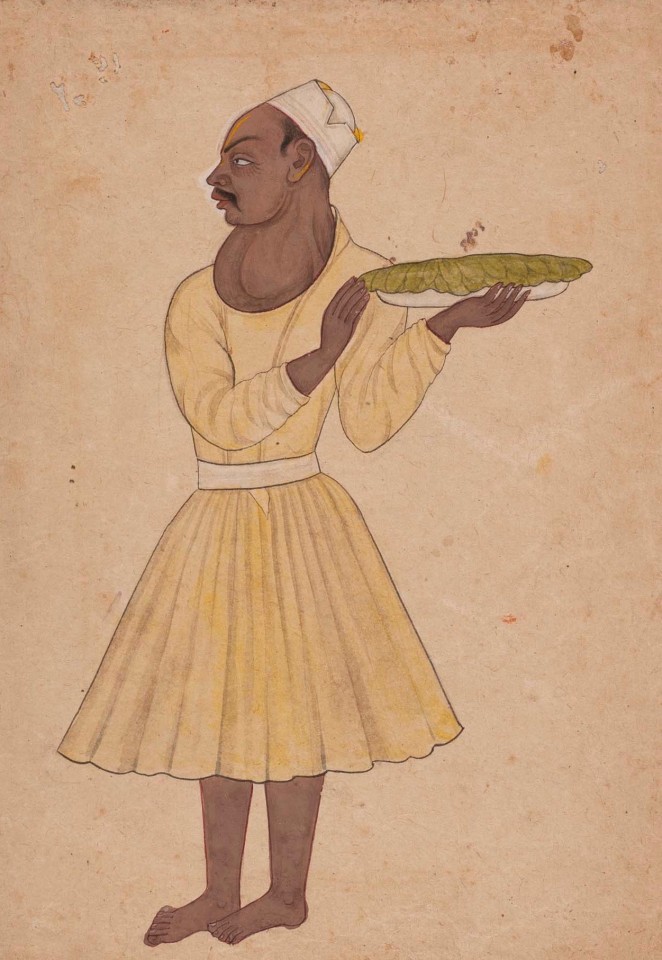Chamba, India
Opaque Pigment on paper
Circa 1740
Inscribed upper centre in Takri ‘Sudhi’
Provenance:
Private European Collection
Formerly in the Collection of Raja Bhawani Shah (1859 -1871), 2ndRaja of Tehri Garhwal.
This unusual portrait depicts a man dressed in a pale yellow jama carrying a platter of food covered by leaves. The vermillion mark on his forehead suggests his Vaishnavite status, but his short jama and bare legs appear to identify his position as a servant at court. The inscription in Takri identifies the servant as ‘Sudhi’. Although the term could mean scholar, pandit or teacher, in this instance it is likely that it is just the servant’s name. His swollen throat reveals that he was suffering from a goitre. Despite appearing to be a low level servant at the court, his serious affliction may explain why he was chosen as the subject of such a portrait.
Although by the mid 19thcentury, the painting had passed into the collection of Raja Bhawani Shah of Tehri Garhwal, the painting appears to have been created at the court of Chamba, roughly a century earlier. Several such portraits depicting, drunkards, opium addicts and the oddities of society were created at the court of Chamba in the mid 18thcentury. These paintings are now widely dispersed, but several examples are published in the collection of Jagdish Mittal.
The depiction of goitres in Western classical art has been widely studied, both by art historians and medical researchers. Within these articles, it is noted that during the Baroque and Renaissance period the depiction of goitres in art was quite commonplace, sometimes even appearing in the portrayal of Christ and the Madonna, but there are fewer known references within Indian art. Today the North of India remains an area where iodine deficiency, which leads to the development of goitres, is an on going problem, so it is natural to assume that such afflictions would have been a common place sight in the 18thcentury. It is interesting to note that the court scene depicting Maharaja Ishvari Sen, celebrating the Shivaratri festival, (part of this current exhibition) also includes a female figure amongst the crowd suffering with a goitre. Although in the West, by the 18thcentury, the goitre was used in caricatures by artists such as James Gillray, as a symbol of gluttony, there is no evidence to suggest that it was used in a similar manner in India. However, Sudhi was clearly sufficiently well-known at court to justify the attention of the court artist and his patron.
